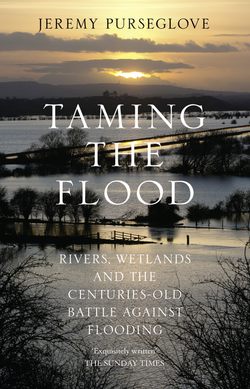Читать книгу Taming the Flood: Rivers, Wetlands and the Centuries-Old Battle Against Flooding - Jeremy Purseglove - Страница 8
CHAPTER 1 RIVER VERSUS DRAIN The Conflict within Traditional Flood Management
ОглавлениеI never thought for one moment that my life would become bound up with rivers. It all began when a woman threatened to tie herself to a willow tree. I had just started working as a landscape architect for a water authority, and my duties were to involve planting trees around reservoirs and new office buildings. I had never heard of river engineers until one morning a very harassed engineer rang to ask me to persuade the woman in question not to tie herself to the ancient pollard, which he intended to fell. Indeed, he asked me, as the authority’s environmentalist, to suggest ways of calming the local community’s very vocal outrage at what he was intending to do to their river. The engineer explained his problem. All he was attempting to do was to prevent the river from flooding these ungrateful people’s houses. For this, however, many trees would have to be removed, and the river would have to be deepened and straightened. It would cease to be recognizable as the river that the local people enjoyed, but it would become a very efficient drain, so that their sitting-rooms would no longer be ruined periodically, and farmers with land adjacent to the river would be able to grow more and better crops to feed the very people who were complaining. So the case was put: river versus drain.
This book is about that conflict of values, the efforts made to come to terms with that conflict, and its implication for one of the major issues of our time—the reshaping of our farm policy, which, with the single aim of increased food production, has transformed the countryside in what is perhaps the greatest agricultural revolution since the settling of England began.fn1
Seldom has the conflict over what a river means to different people been more dramatically highlighted than in the case of the river Stour at Flatford Mill. Here John Constable painted The Hay Wain. Reproduced in calendars, on birthday cards, and in coffee-table books, this painting has become almost a ritualized symbol of the reverence that English people have for their countryside. I remember once dealing with a particularly brutal river scheme, and seeing hanging in the engineers’ portacabin, which overlooked the now canalized river, a calendar showing The Hay Wain. The connection was not made. In 1984 the Anglian Water Authority applied for permission to carry out a land-drainage scheme on the Stour between Stratford St Mary and Flatford Mill, with the purpose of converting the riverside pasture to oil-seed rape. Mr John Constable, the painter’s great great grandson, protested in The Times: ‘Believe me, rape is what we’re talking about.’ The water authority responded with its case: ‘We are up against a lot of pressure from landowners to do something about the flooding.’1
A river is a symbol of changeless change. Overnight, in a flash flood, it will dramatically move its banks, depositing shoals and cutting new channels. In recent decades, the Severn has been steadily undercutting the riverside churchyard at Newnham. The skeletons of the village forefathers are regularly exposed and then claimed by the river, and now the church itself is threatened. The local diocese has appealed to the water authority to do something about it; but something as elemental as the ever-moving Severn is beyond the resources of even the richest and most powerful water authority. At Crowland in Lincolnshire stands a medieval bridge, stranded high and dry in the middle of the town. The three streams which once ran beneath it have long since vanished, but, at the back of the town, the water still finds its way to the sea, as it has from the beginning of time. William Wordsworth described the river Duddon as something that would always be recognized by succeeding generations:
I see what was, and is, and will abide
Still glides the stream and shall for ever glide.2
Nowadays, however, we are capable of transforming rivers so that they become quite unrecognizable. If, while waiting in the rush-hour queue at Sloane Square tube station, you chance to look up, you will see a large iron pipe. It is, or was, the river Westbourne. This is the ultimate in human domination of a river, although many city rivers might just as well be piped. The Rea in Birmingham and the Medlockfn2 in Manchester hurry down through their straitjackets of steel and concrete, unnoticed by the passing crowds.
